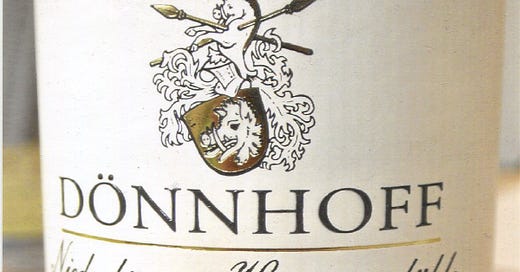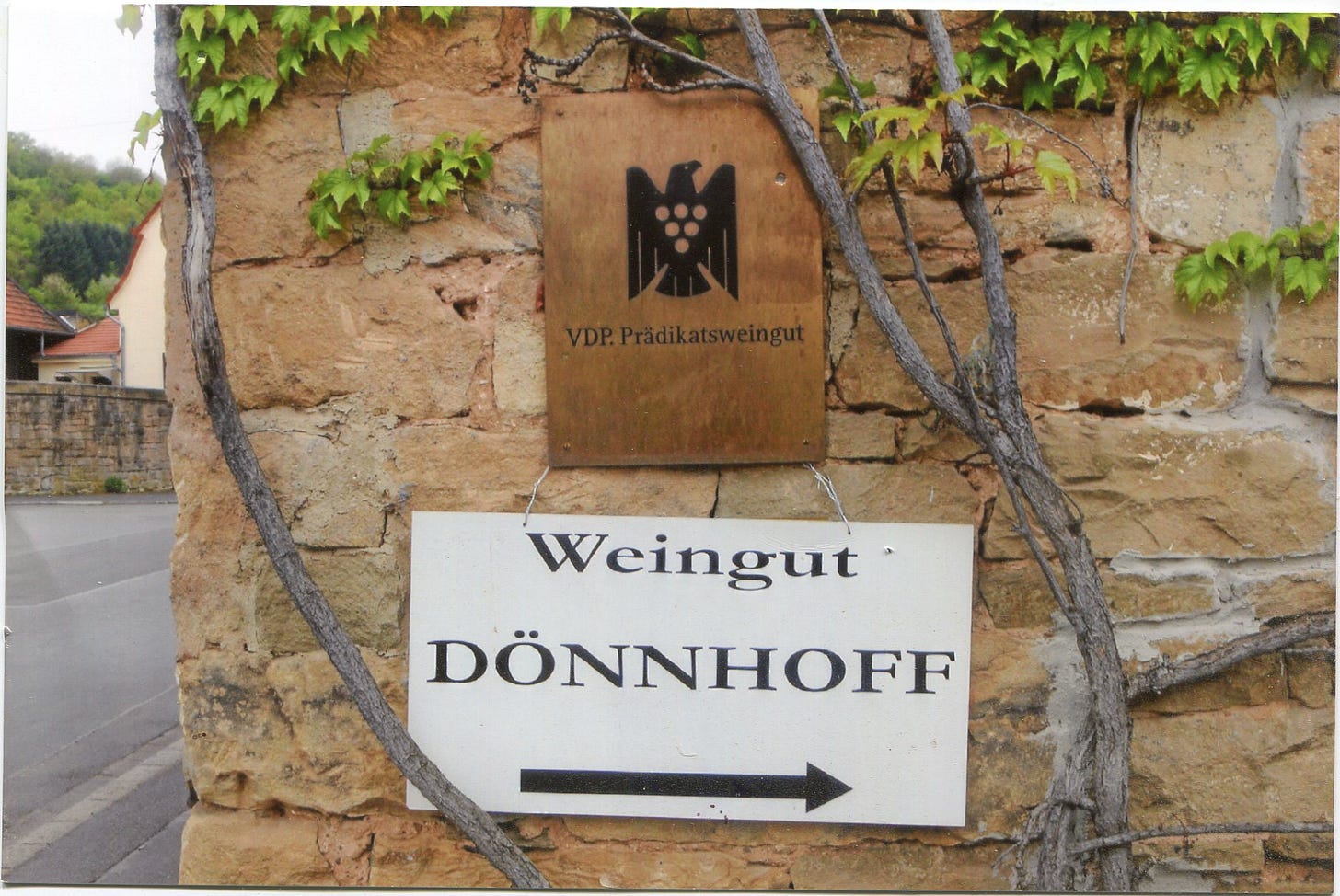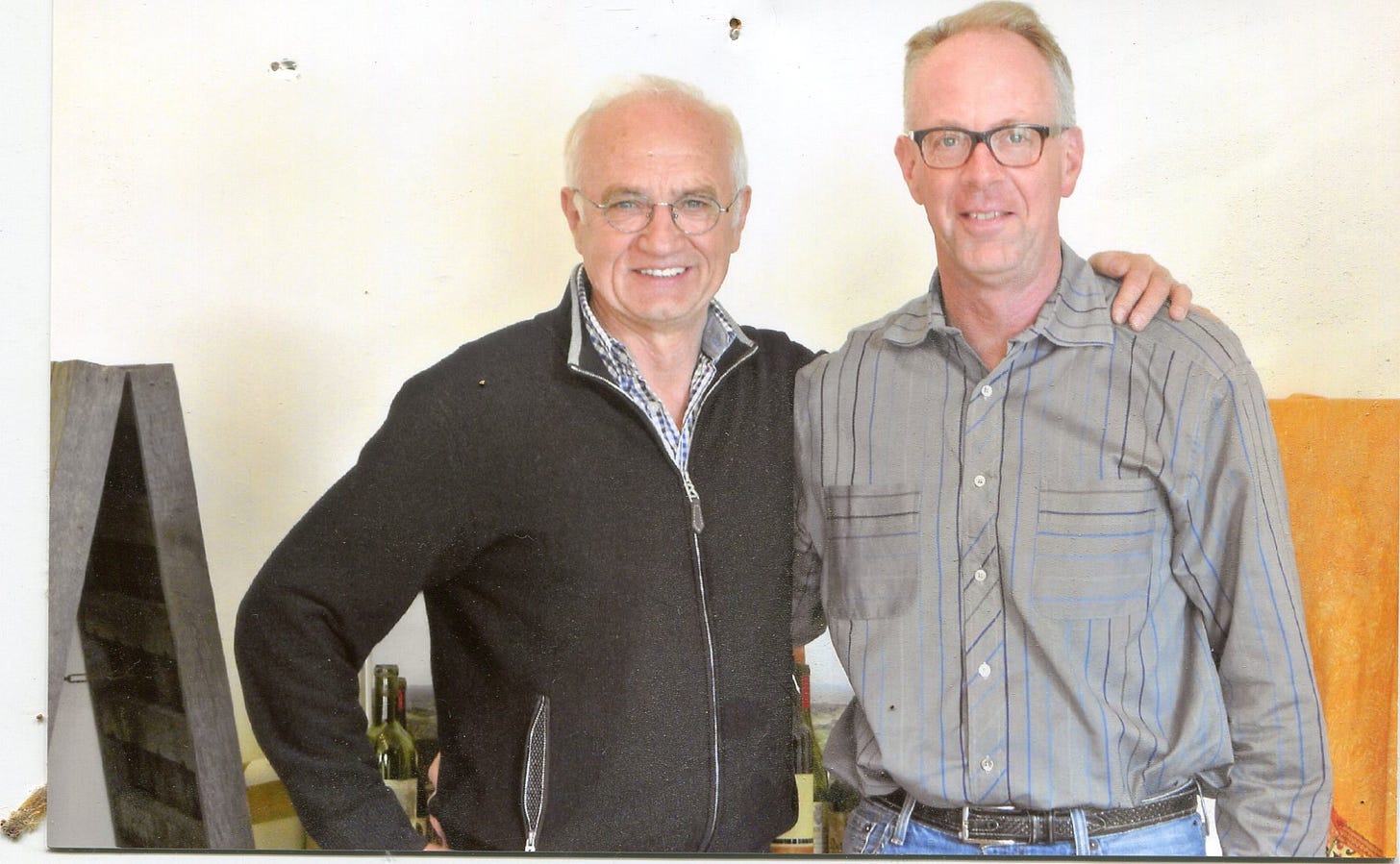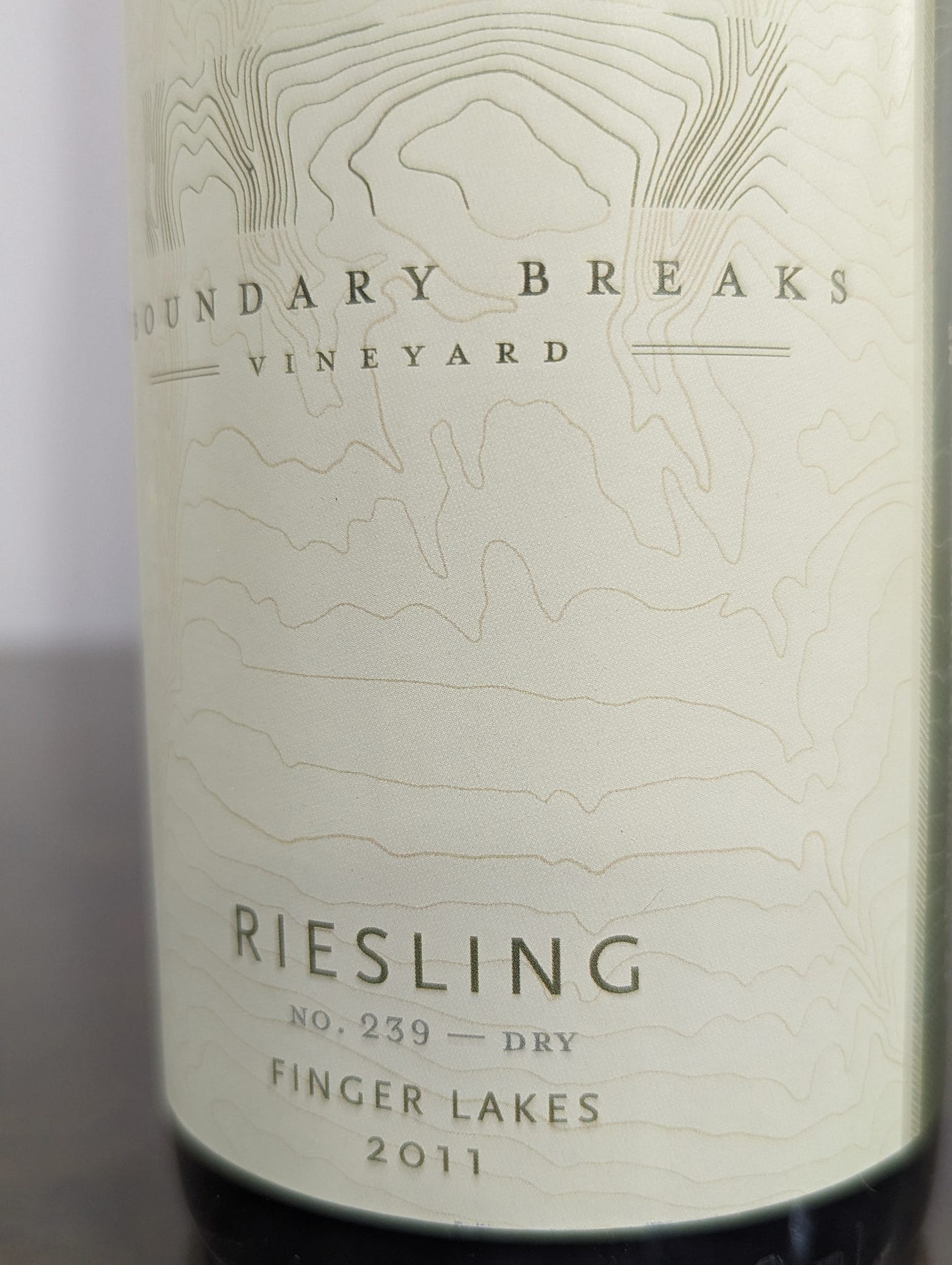On this past Thursday, a guest said he had a bottle of our Dry Riesling #239 from 2015. Should he drink it, or save it; and if he saved it, for how long?
In Substack #14, I described the experience of drinking a sweeter style of Riesling with a meal of Thai food. This was a slightly-aged Riesling and the flavors were unlike anything I had tasted before. Rieslings in this style are known for improving gracefully as they age. But, what about Dry Rieslings?
It is very hard to find a definitive answer to this question. We want the answer to be “yes,” but whom do you believe. It has to be either an indisputable authority, or your own direct experience.
In 2018, Diana and I took a trip to Germany and arranged a visit to the winery operated by the Dönnhoff family. (This is the winery that produced the wine that I ordered with the Thai meal.) We met with Helmut Dönnhoff who was as gracious a host as anyone could imagine. He is also a legend among Riesling producers.
So I asked him the question. How do dry Rieslings age? His answer was the following.
Well-made and properly-stored dry Rieslings are perfectly drinkable until around year seven. At that point, he said, they go into a kind of “hibernation;” that is, they close down and seem plain and undistinguished. The wine you remember as having fruit and acidity might seem dull.
Then, Helmut said, after 12 years in the bottle, that dry Riesling may open back up; it can be as fresh as you remember but with a different character to the fruit. Instead of tasting fresh fruit, you might instead taste dried fruit.
Helmut Dönnhoff is the indisputable authority.
We have 30 bottles left of the 2011 Dry Riesling. We can assume it was well-made. We hope it was properly-stored. And we will taste it soon. But not for a couple years. We want to give it time to open back up. We will have a report in 2026.








